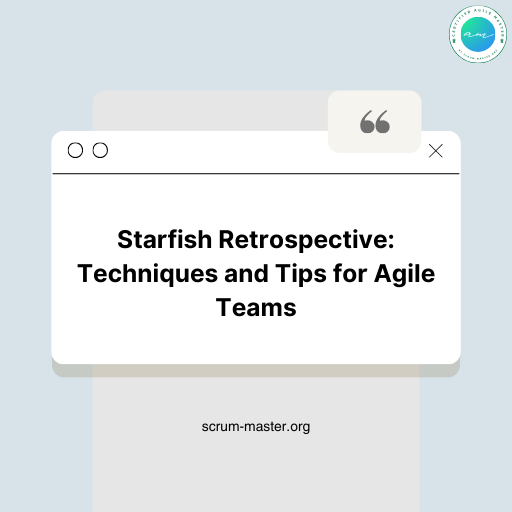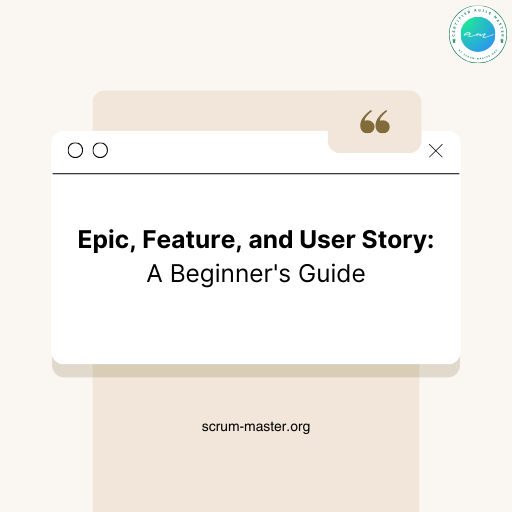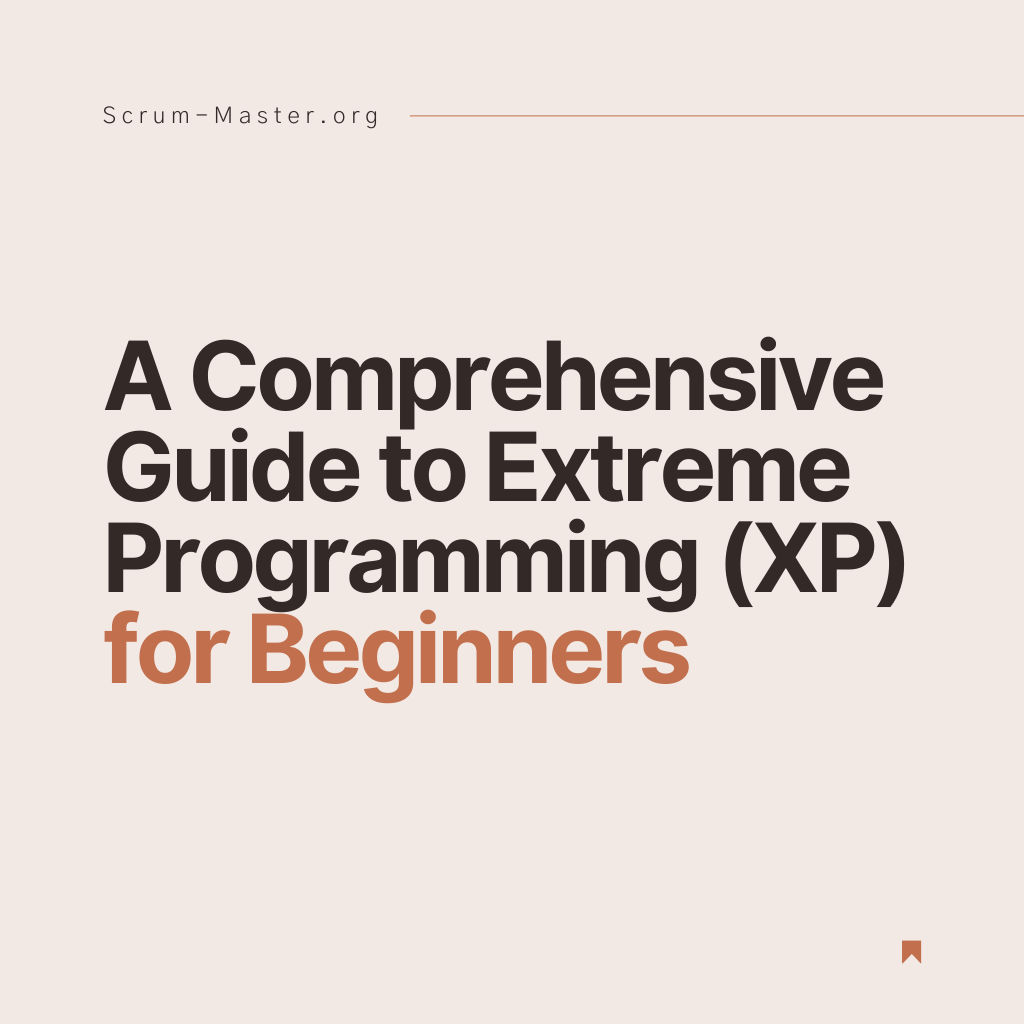The Agile method is an iterative, incremental project management approach that is gaining in popularity in software development and beyond. It is characterized by flexibility, collaboration and a focus oncontinuous improvement.
In this article, we’ll look at the fundamentals of the Agile method, its benefits and challenges, and best practices for optimizing its implementation. If you’re interested in the Agile method and would like to find out more, this article is for you!
The Agile method is based on a set of key principles that guide its approach to project management. These principles are :
Frequent collaboration and communication: Project team members, including customers and stakeholders, collaborate closely and communicate continuously to ensure that the project is moving in the right direction and that customer needs are taken into account.
Incremental delivery: Agile favors frequent delivery of operational functionalities, rather than a single final delivery. This enables customers to benefit quickly from the most important features, and to provide feedback to guide further development.
Adaptability to change: Agile recognizes that customer needs and project requirements can change over time. This means that changes can be made flexibly and efficiently during the course of a project, without compromising quality or deadlines.
Team self-organization: Agile teams are autonomous and responsible for making decisions to achieve project goals. This encourages creativity, motivation and productivity among team members.
Continuous improvement: Agile encourages constant reflection on the team’s processes and performance in order to make continuous improvements and achieve greater efficiency and quality in the project.
- People and their interactions, rather than processes and tools.
- Operational software, rather than exhaustive documentation.
- Collaboration with customers, rather than contractual negotiation.
- Adapting to change, rather than following a plan.
We recognize the value of the latter, but prefer the former.
Manifesto for Agile Software Development
The advantages of the Agile method
The Agile method offers many advantages for project management. Some of the main advantages are :
Adapting to change: The Agile method enables rapid adaptation to changes in customer needs, the competitive environment or the market, which can avoid delays and additional costs.
Rapid delivery of operational features: Agile favors frequent delivery of operational features, enabling customers to benefit quickly from the project’s added value.
Collaboration and transparency : Agile promotes close collaboration between project team members, customers and stakeholders, as well as transparency on project progress. This helps to better alignexpectations, resolve problems quickly and improve project quality.
Flexibility and responsiveness: The Agile method enables us to deal with unforeseen events and changes in a flexible, responsive way, which means we can better manage risks and optimize project resources.
Customer satisfaction: Agile focuses on customer satisfaction by delivering operational functionality quickly, involving customers in the development process and responding to their changing needs efficiently.

The challenges of the Agile Method
While the Agile method offers many advantages, it also presents challenges that need to be taken into account. Some of the main challenges are :
Time and resource management: The iterative and incremental nature of Agile can make it difficult to manage project time and resources, especially when it comes to planning and coordinating the various iterations or sprints.
Communication and collaboration: The close collaboration and frequent communication required by Agile can be a challenge for geographically dispersed teams, or for projects involving multiple stakeholders with complex requirements.
Adherence to the methodology: The Agile method requires strict adherence to its principles and practices to be effective, which can be a challenge for some teams or organizations used to more traditional project management approaches.
Change management: Although Agile allows changes to be made during the course of a project, it can also be difficult to manage constant changes and avoid drifting away from the project’s initial objectives.
Documentation and tracking
Agile emphasizes the delivery of operational functionality rather than comprehensive documentation, which can pose challenges in terms of tracking, documentation and compliance with industry standards.
Feedback from LinkedIn
- Limit the size of your Backlog to a few weeks. (the Backlog is the list of features to be developed).
- Limit the size of all User Stories to no more than a few days. (A User Story is a user scenario/functionality to be developed).
- Sort User Stories by user value.
- Choose the most valuable User Story (the one with the highest priority).
- Develop it.
- Collect feedback from customers/users as you work.
- Adjust developments to take account of feedback obtained earlier.
- Deliver continuous development.
- Choose the next User Story.
- Repeat!
- Continuous improvement – Solve problems as they arise.
Martin Dalmjin’s approach fosters trust and enables you to get things done without having to apply a heavyweight Framework to your organization.
That’s one approach, but you can also find your way by working and simplifying your team’s workflow as much as possible.

Conclusion
In conclusion, the Agile method is an iterative, incremental approach to project management that fosters collaboration, flexibility and continuous improvement. It offers many advantages, such as the ability to adapt to change, rapidly deliver operational functionality and improve customer satisfaction.
However, it can also present challenges, particularly in terms of managing expectations and maintaining ongoing communication. To succeed with the Agile method, it’s important to understand its principles, choose an appropriate framework(Scrum, SAFe, XP…) for your project and commit fully to an iterative, collaborative approach.
Agile Method FAQ :
The fundamental principle of the Agile method is to adopt an iterative, incremental approach to project management. This means that projects are broken down into small, manageable parts, called “iterations”, which are then developed and tested on an ongoing basis. This enables greater flexibility and adaptability to change, closer collaboration between team members and stakeholders, and continuous product and process improvement.
Working in Agile mode means adopting a project management approach that emphasizes flexibility, collaboration and continuous improvement. This involves working in small, self-organizing teams, delivering operational features incrementally, collaborating closely with stakeholders to understand and meet their needs, and adapting and evolving in response to feedback and changes.
There are several Agile methods, the most popular of which are Scrum, Kanban, Lean, Extreme Programming (XP) and Feature-Driven Development (FDD). Each of these methods has its own characteristics and advantages, but they all share the fundamental principles of Agile, such as incremental delivery, collaboration, adaptability to change and continuous improvement.
An Agile project is divided into several iterations or “sprints”. Each sprint begins with a planning meeting, during which the team determines which elements of the product backlog will be developed during that sprint. The team then works to develop and test these elements, collaborating closely and communicating regularly throughout the process. At the end of the sprint, the team delivers a working version of the product and holds a retrospective meeting to discuss what went well and what could be improved in future sprints.
There are a number of tools that can help to facilitate the implementation of the Agile method. Some of the most popular Agile tools include Jira and Trello,
Miro
and Microsoft Teams, which can help with sprint planning, task tracking, team collaboration and communication. Other tools, such as Git for version control, Jenkins for continuous integration, and Selenium for automated testing, are also commonly used in Agile projects.
An Agile mindset is a way of thinking that embraces the principles of the Agile method. This means being open to change, valuing collaboration and communication, focusing on delivering customer value, and constantly striving to improve and learn. An Agile mindset recognizes that uncertainty and change are inevitable in project management, and seeks to take advantage of these realities rather than fight them.
Suggested reading
Title : “Scrum: The Art of Doing Twice the Work in Half the Time”.
Author
By Jeff Sutherland.
This book, written by Jeff Sutherland, one of the co-founders of the Scrum method, is an essential guide to optimizing productivity and quality in Agile projects using Scrum. It presents the basic principles of Scrum, with practical examples and tips for implementing this Agile method in your working environment. A must-have book for those who want to deepen their knowledge of Scrum and improve their project management.
Sources
- Linkedin post of Marteen Dalmjin.
- The Agile Manifesto in French.
- To prepare this article, I consulted ChatGPT, a language model created by OpenAI and trained on a vast data set to provide precise and useful answers to the questions asked.









